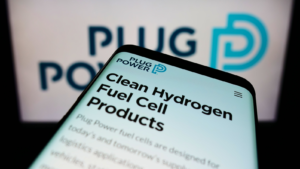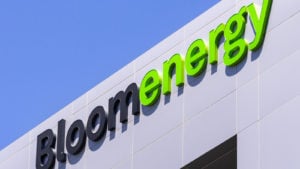Hydrogen stocks ended 2023 on a sour note and have not started 2024 on good footing either. The Global X Hydrogen ETF (NASDAQ:HYDR), which holds 27 different hydrogen energy companies, has fallen 19.4% on a year-to-date basis.
However, this doesn’t mean the sector will not benefit from long-terms secular trends. For example, the Inflation Reduction Act of 2022 provides tax incentives and subsidies to clean energy projects, including hydrogen energy projects. Investors desiring to allocate to clean energy equities assets should probably regard this major dip in equity value as an opportunity to allocate to a long-term energy trend.
Here are three hydrogen stocks to consider buying to make a 10x return.
Plug Power (PLUG)

Plug Power (NASDAQ:PLUG) is the largest supplier of liquid hydrogen and the company produces hydrogen fuel cells for the supply chain and logistics industries. Companies within these sectors have developed the will to decrease their carbon footprint, and one way to go about it is by employing hydrogen fuel cells, where some go about this by deploying hydrogen-powered forklifts, trucks, buses and drones. Plug Power’s fuel cells are key to this. The hydrogen fuel cell developer has successfully formed several strategic partnerships with major players in the mobility and logistics sector. This includes Amazon (NASDAQ:AMZN), Walmart (NYSE:WMT) and Airbus (OTCMKTS:EADSY).
Plug Power’s shares have plummeted more than 17% since the start of 2024. However, there may be good news on the horizon. The company is trading at a historically low multiple, and it has also announced a cost-cutting plan to save more than $75 million. These initiatives include “operational consolidation” and “workforce adjustments.”
Cuts to operational costs and strategic review could improve Plug Power’s earnings prospects and shareholder returns.
Linde (LIN)

A leader in industrial gases and chemicals, Linde (NYSE:LIN) has become heavily involved in various aspects of the hydrogen value chain, from production to distribution to end-use applications. Hydrogen atoms are required in large quantities in the chemical industry for the clean production of ammonia, plastics, synthetic jet fuel and metals. Currently, most hydrogen atoms for chemicals are derived from gases like methane.
Last year, Linde’s management team announced the company would invest between $7 to $9 billion in clean energy projects over the next few years. Thus far, Linde operates 80 hydrogen plants worldwide and has installed almost 200 hydrogen refueling stations.
In their Q4 earnings, the industrial gas giant beat Wall Street’s estimates for sales and adjusted earnings. Unfortunately, the company will still see slow growth in 2024 due to slower demand for metals and electronics end-markets. Still, Linde’s investments in hydrogen could serve as a growth catalyst in the future, boosting shareholder returns.
LIN shares have risen more than 6% YTD, and the company trades at 28.1x forward earnings.
Bloom Energy (BE)

Bloom Energy (NYSE:BE) is a pure-play innovator in the hydrogen industry. The company’s solid oxide fuel cell (SOFC) technology can generate electricity from various fuels, including natural gas, biogas and hydrogen.
The “Bloom Energy Server” also produces electricity through an electrochemical process. This reduces the need for combustion and thereby reduces emissions. Bloom’s Energy Server can provide reliable, 24/7 power, making it an attractive option for businesses and institutions that require constant power supply. The server also operates independently of the grid, which can prove crucial during power outages or in areas with unstable grid infrastructure.
Unfortunately, the company’s earnings in recent quarters have been mixed. In their recent Q4 earnings print, revenue for the quarter decreased 23% Y/Y, while total year revenue increased just over 11%. However, given the market’s secular tailwinds, Bloom Energy could be an enticing long-term bet, especially as it trades at a much lower multiple than it did 12 months ago.
On the date of publication, Tyrik Torres did not have (either directly or indirectly) any positions in the securities mentioned in this article. The opinions expressed in this article are those of the writer, subject to the InvestorPlace.com Publishing Guidelines.

